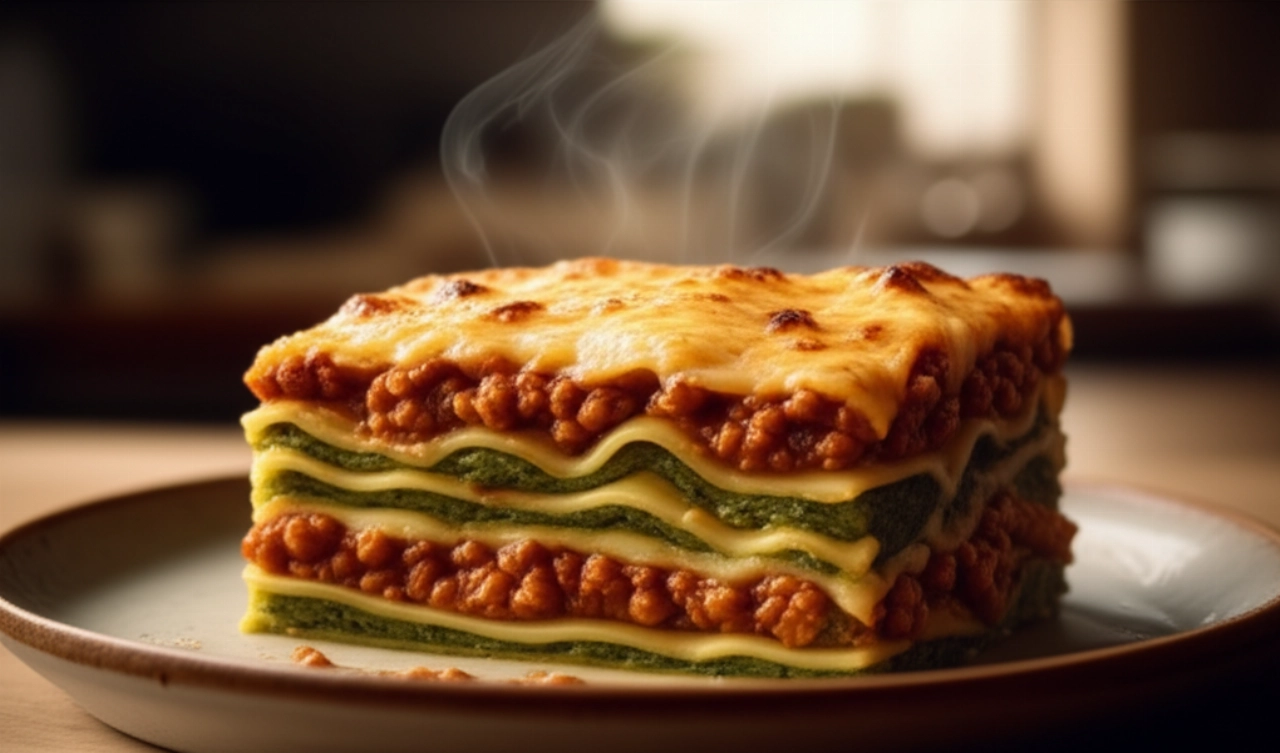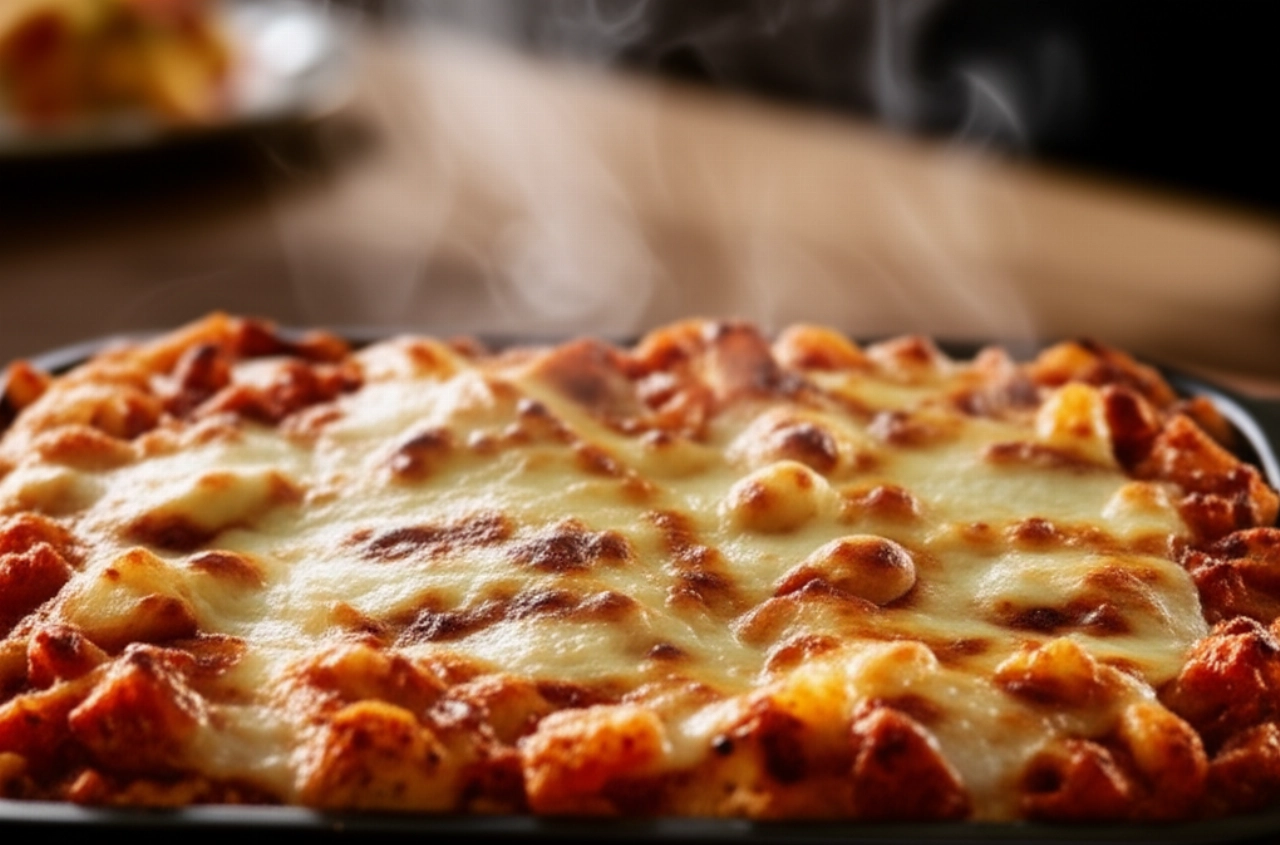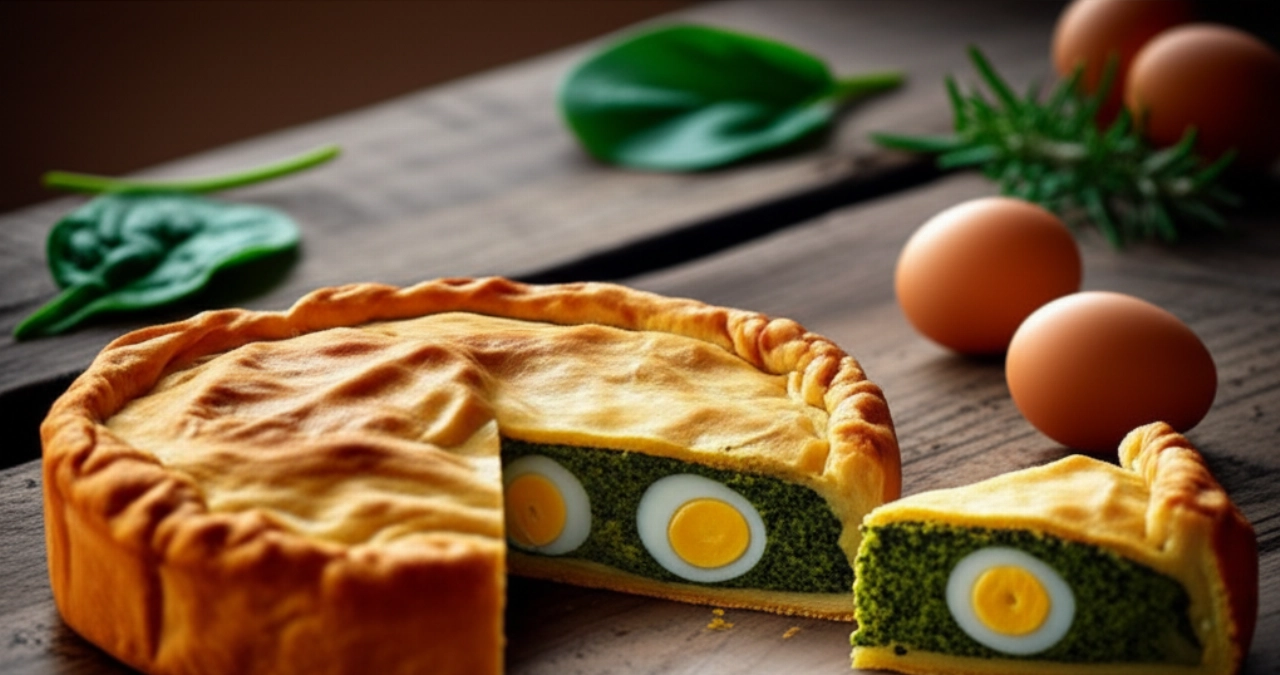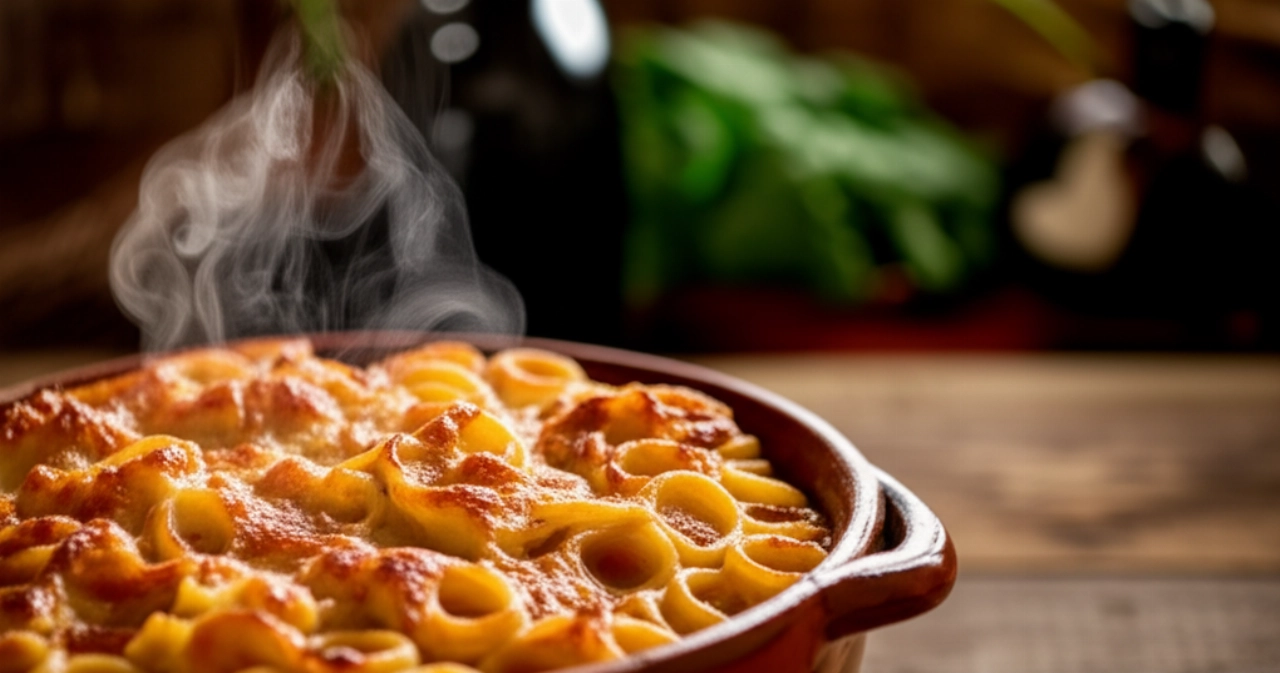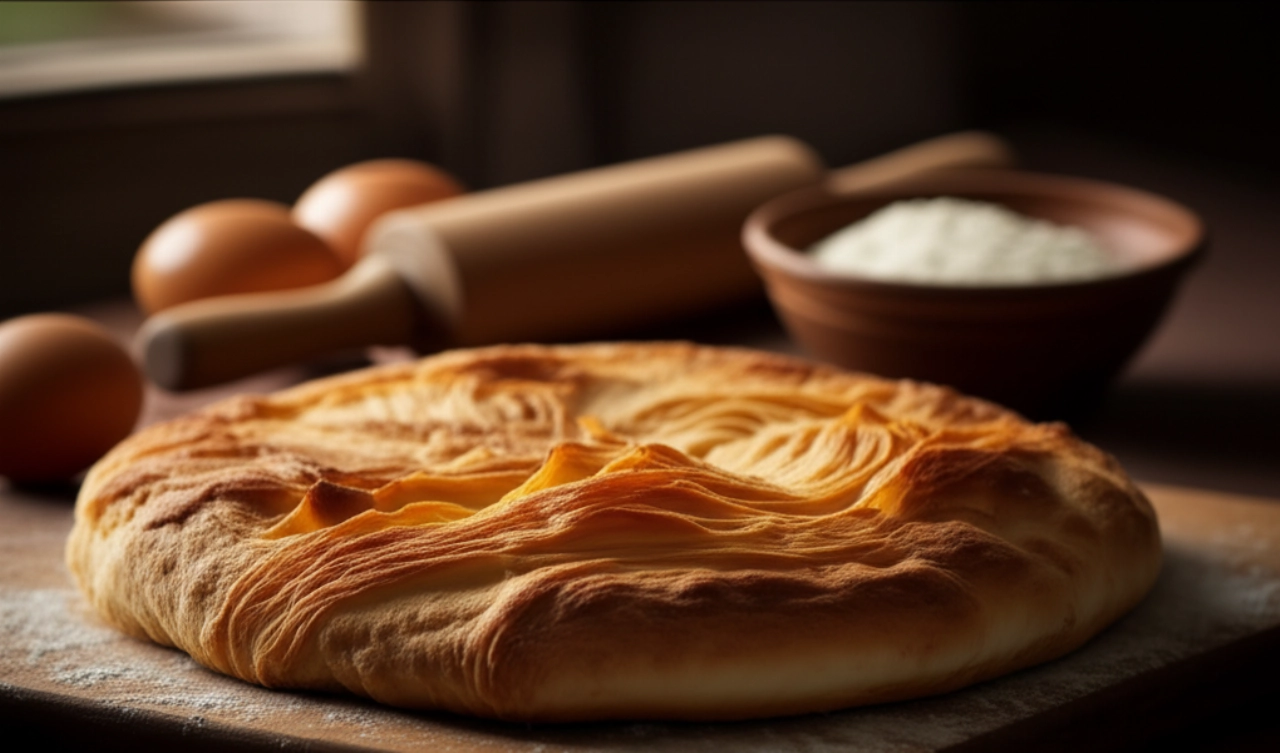There's a scent that smells of home, of celebration, of hugs and family Sundays. It's the scent of Baked Lasagna, a dish that evokes memories and creates new traditions.
But how many times have you worried that the ragù was too dry, the béchamel too runny, or the pasta too hard? Preparing perfect Lasagna can seem like a daunting task, a real 'exam' in the kitchen.
Fear not, my friend! Here on Search Recipes, your trusted chef grandma takes you by the hand. I won't just give you a recipe, but the ultimate guide, full of tricks and practical tips, to bring the most delicious and harmonious Baked Lasagna you've ever tasted to your table. Success is guaranteed, and applause will be your reward!
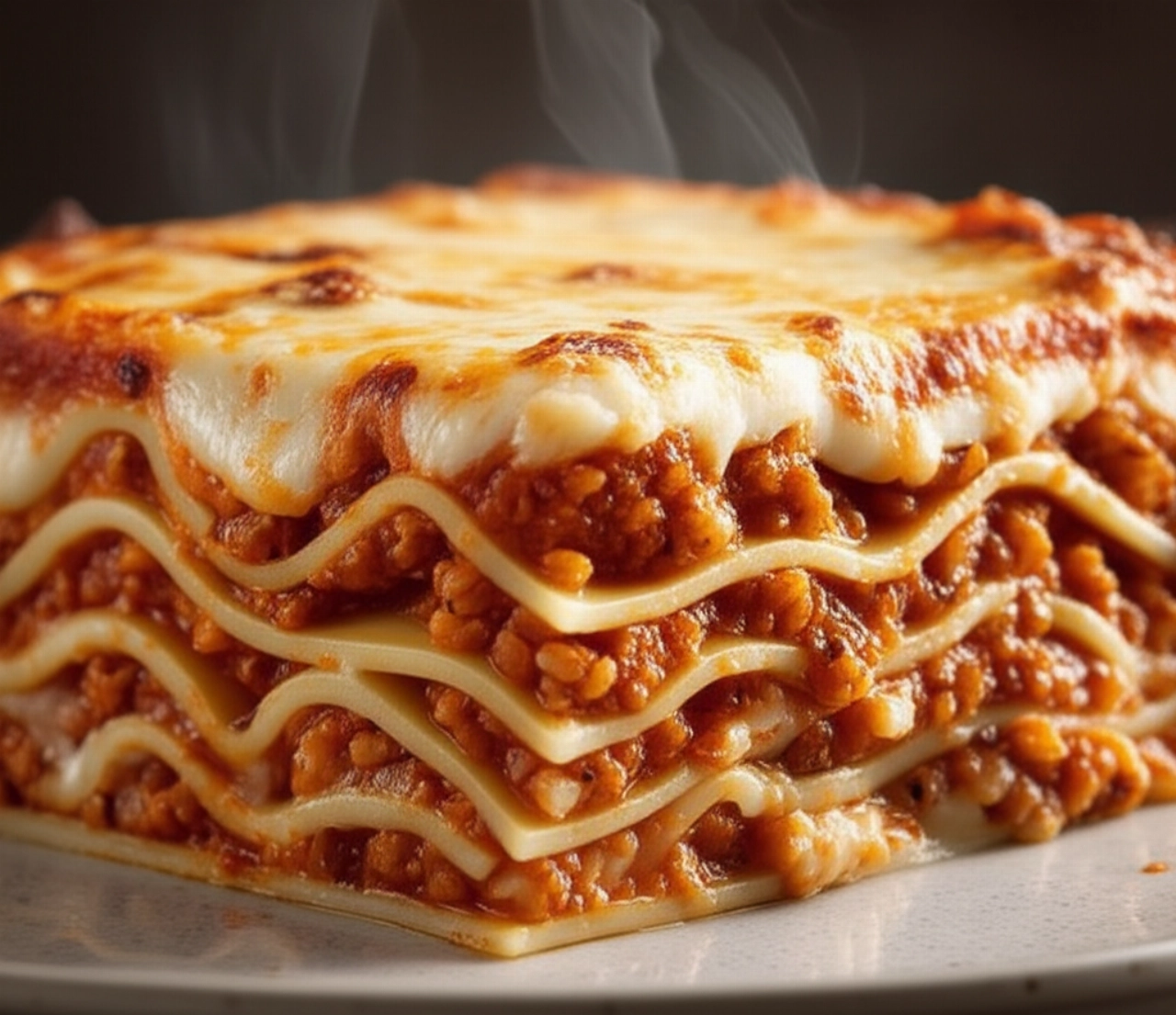
Smart Ingredients: The Choice That Makes a Difference for Your Lasagna
To achieve layers of pure goodness and a flavor that will make you close your eyes, the choice of ingredients is fundamental. It's not just a list, it's a strategy!
- Fresh Egg Pasta: Choose fresh egg pasta, preferably the rough kind that 'catches' the sauce better. If using dry pasta, don't pre-cook it too much: it should finish cooking in the oven, absorbing the flavors of the ragù and béchamel.
- Meat for the Ragù: A mix of ground beef (for intense flavor) and pork (for tenderness and the right fat) is ideal. Don't forget the pancetta, the real secret to a textbook soffritto that will add depth to your Bolognese ragù.
- Tomato: Quality tomato passata, thick and sweet. If you have time, a good tomato paste will add depth and an inviting color to your sauce.
- Béchamel: Whole milk for an enveloping creaminess, good quality butter, and 00 flour. Nutmeg? Indispensable for that aromatic touch that makes all the difference and makes the béchamel velvety and fragrant.
- Cheese: Aged Parmigiano Reggiano, grated at the moment. It's what creates that golden, flavorful crust on the surface and binds all the flavors inside, making every bite a pleasure.
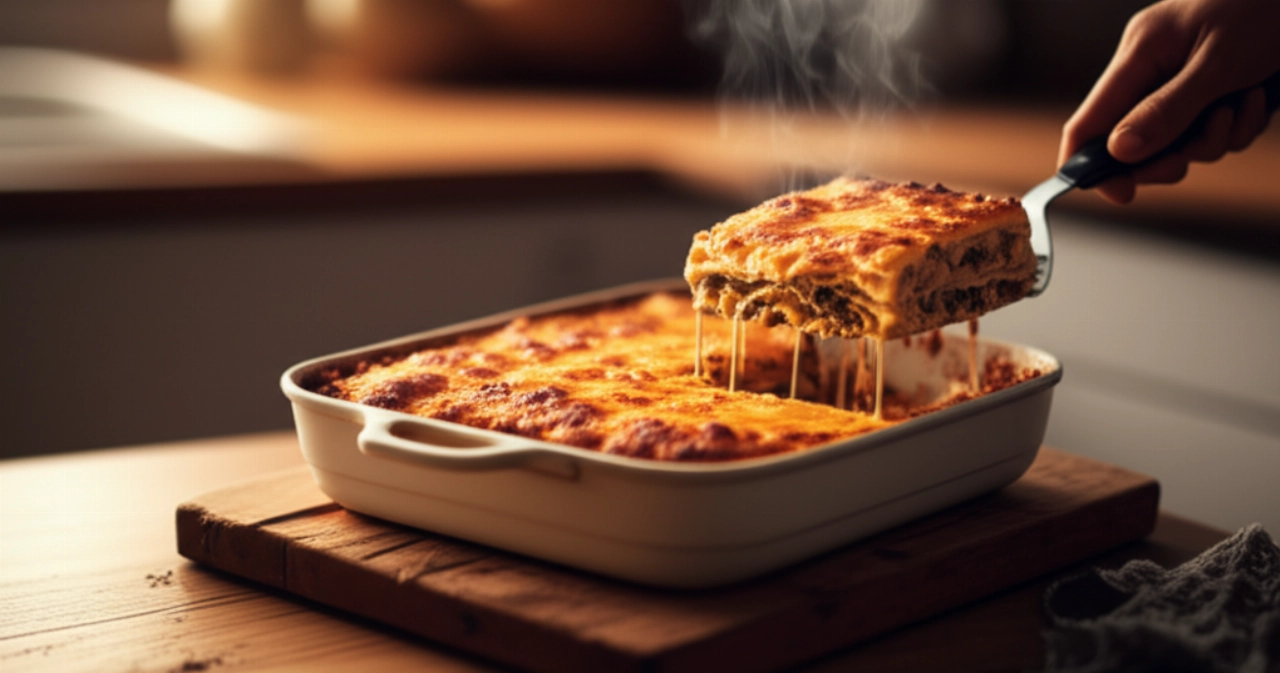
3 Common Mistakes That Can Ruin Your Lasagna (and How to Avoid Them)
Every chef, even the most experienced grandma, has learned from their mistakes. Here are the most common ones, and how to avoid them to guarantee the success of your baked lasagna:
- Ragù Too Dry or Too Runny: The ragù is the heart of the lasagna. If it's too dry, the lasagna will be stringy; if it's too runny, your layers will 'swim' and the lasagna will fall apart. The secret is slow and gentle cooking until it has the right consistency, neither watery nor as thick as a pasta sauce. It should be moist but compact.
- Lumpy or Bland Béchamel: A lumpy béchamel is a nightmare. To avoid it, add warm milk in a thin stream to the flour and butter (the roux), stirring vigorously with a whisk. And don't forget salt, pepper, and plenty of nutmeg to enhance its flavor and make it irresistible.
- Messy or Too Thick Layers: Balance is everything. Don't overdo the amount of béchamel or ragù per layer, otherwise the lasagna won't 'hold' and will be heavy. Distribute evenly to ensure that every bite is an explosion of balanced flavor and a perfect harmony between the ingredients.
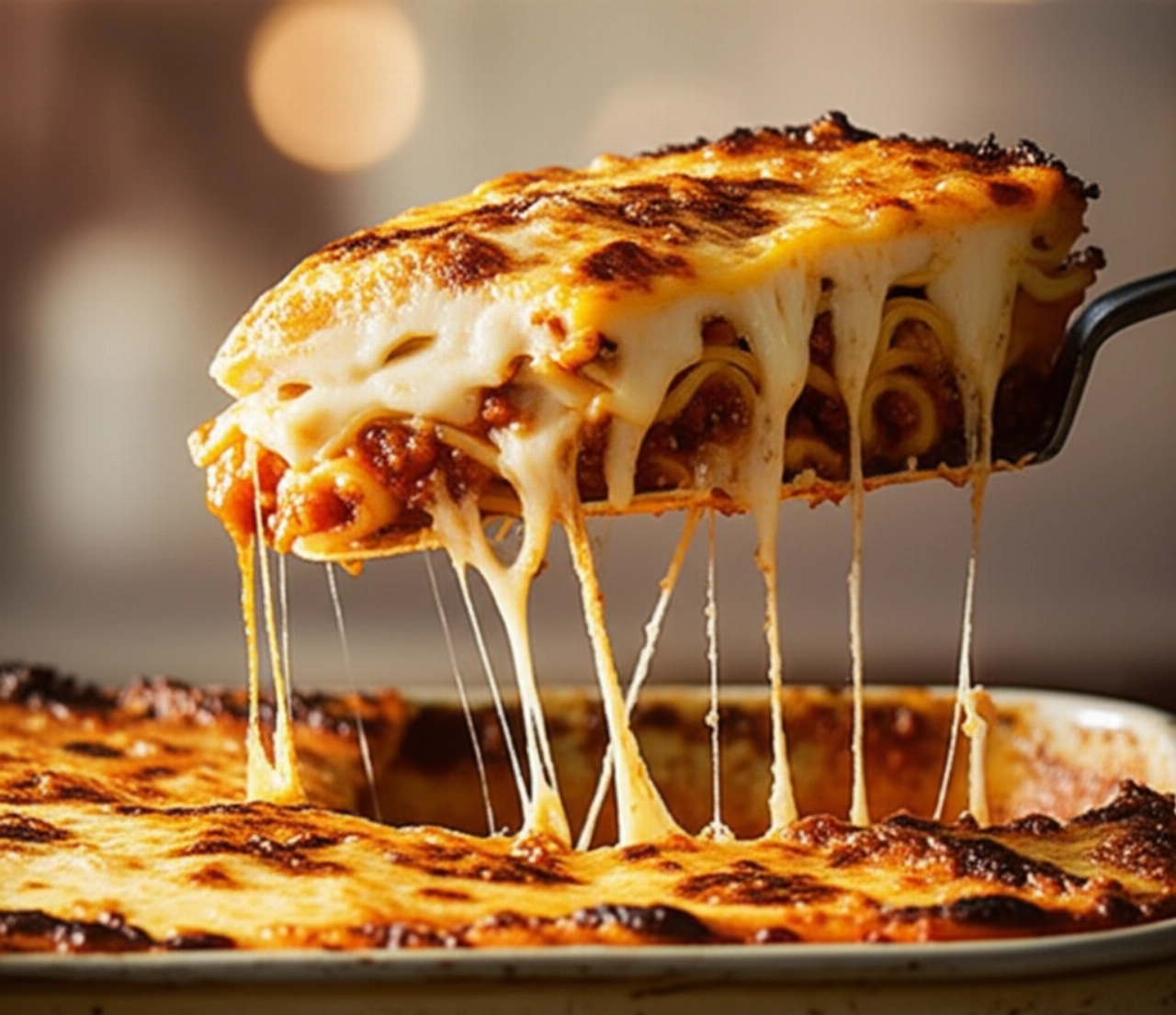
Grandma's Secret: The Magic Touch for Unforgettable Lasagna
My grandma always said: 'Lasagna isn't just ingredients, it's patience and love.' And she was right. Her secret? Letting the ragù rest overnight. Yes, you heard that right! Prepare it the day before. The flavors will meld, intensify, and the next day it will be even better and easier to spread. This is the real trick for a Sunday dish that tastes of tradition.
And another little trick: a tablespoon of milk in the ragù, at the end of cooking, will make it even more velvety and less acidic, a detail few know but which makes all the difference.
Let's Prepare Baked Lasagna Together: The Step-by-Step Guide for Guaranteed Success
Ingredients:
- For the Bolognese Ragù (approx. 1 kg):
- 300g ground beef
- 200g ground pork
- 100g stretched pancetta or coppa, finely chopped
- 50g carrot, 50g celery, 50g onion (soffritto)
- 200ml dry red wine
- 500g quality tomato passata
- 2 tablespoons tomato paste
- Vegetable broth or hot water as needed
- Extra virgin olive oil, salt, pepper, bay leaf
- For the Béchamel (approx. 1 liter):
- 1 liter whole milk
- 100g butter
- 100g 00 flour
- Salt, white pepper, nutmeg as needed
- For Assembly:
- 500g fresh lasagna pasta
- 150g grated Parmigiano Reggiano
Ragù Preparation (the heart of your Lasagna):
- In a large pot (preferably earthenware or thick-bottomed), heat a drizzle of oil and add the chopped pancetta. Let it brown until crispy and its fat has rendered.
- Add the soffritto (finely chopped carrot, celery, onion) and let it soften gently for about 10 minutes, without burning.
- Add the ground meats and brown them over high heat, stirring frequently, until they have changed color and lost their water. Break up the meat well with a wooden spoon.
- Pour in the red wine and let it evaporate completely over high heat. This step is essential to eliminate acidity and concentrate the flavor.
- Add the tomato passata, the tomato paste, and a bay leaf. Mix well, bring to a boil, then reduce the heat to minimum.
- Cover and let it simmer gently for at least 2-3 hours, stirring occasionally and adding hot broth if the ragù becomes too dry. The ragù will be ready when it is thick, dark, and the flavors are well blended. Adjust salt and pepper.
Béchamel Preparation (the velvety companion):
- In a thick-bottomed saucepan, melt the butter over low heat.
- Add the flour all at once and stir vigorously with a whisk to create the "roux". Let it cook for one minute, without letting it brown too much.
- Pour in the warm milk in a thin stream, continuing to stir with the whisk to prevent lumps from forming.
- Bring to a boil, stirring constantly, until the béchamel has thickened to the desired consistency (it should be fluid but not runny).
- Remove from heat and season with salt, white pepper, and plenty of nutmeg. Cover with cling film directly on the surface to prevent a "skin" from forming.
Lasagna Assembly (the art of layering):
- Preheat the oven to 180°C (fan-assisted).
- On the bottom of a baking dish (approx. 20x30 cm), spread a thin layer of ragù and then a thin layer of béchamel.
- Cover with a layer of fresh pasta. If the pasta is dry, you can blanch it for 1 minute in salted water and then cool it in cold water before using.
- Spread a generous layer of ragù, then one of béchamel, and finally a generous sprinkle of Parmigiano Reggiano.
- Repeat the layers: pasta, ragù, béchamel, Parmigiano, until all ingredients are used, finishing with a generous layer of ragù, béchamel, and plenty of Parmigiano.
- Bake for about 30-40 minutes, or until the surface is golden and crispy. If it starts to brown too much, cover with aluminum foil.
- Once cooked, let the lasagna rest out of the oven for at least 10-15 minutes before serving. This allows the flavors to settle and the layers to firm up, making slicing easier and the result even more sublime.
Tips and FAQs for Your Perfect Baked Lasagna
I've gathered the most common questions I get asked about lasagna. I hope they help you!
- Can I prepare lasagna in advance? Absolutely! You can assemble it completely and store it in the refrigerator for one day, covered with cling film. Bake directly from the fridge, perhaps slightly increasing the cooking time.
- How can I freeze lasagna? You can freeze lasagna both raw (assembled but uncooked) and cooked. If raw, wrap it well in cling film and then in aluminum foil. To cook, thaw it in the fridge and then bake. If cooked, let it cool completely before freezing in portions.
- Why is my lasagna dry? Often it's due to too dry ragù or too little béchamel. Make sure the ragù is moist enough and that each layer is well seasoned with béchamel. A trick is to add a ladleful of hot broth before baking if you feel it's too dry.
- Can I use only beef for the ragù? Of course, you can! But the mix with pork ensures greater tenderness and a rounder flavor. If you only use beef, choose a cut with a bit of fat and perhaps add a little more oil.
- Does fresh pasta need to be blanched? It depends on the type of pasta. If it's very thin, you can use it directly. If it's thicker or dry, a quick blanching for 1 minute in salted water and a dip in cold water will help make it more pliable and ensure even cooking.
There you have it! Now you don't just have a recipe, but all the secrets to bring a dish that tastes of home, tradition, and love to your table. Your Baked Lasagna will be a triumph of flavors and textures, a true embrace for the palate.
Don't be afraid to experiment. Cooking is an act of creativity. But start with this solid base and you'll see that applause won't be lacking. Every time you prepare them, you'll feel the warmth of tradition and the satisfaction of guaranteed success.
Have you tried our Baked Lasagna recipe? We're very curious to see your masterpiece! Leave a comment below, tell us how it went, or share a photo on Instagram by tagging @CercaRicette.it. If you loved this lasagna, you can't miss our recipe for Perfect Bolognese Ragù or for a perfect side dish like Crispy Baked Potatoes.

